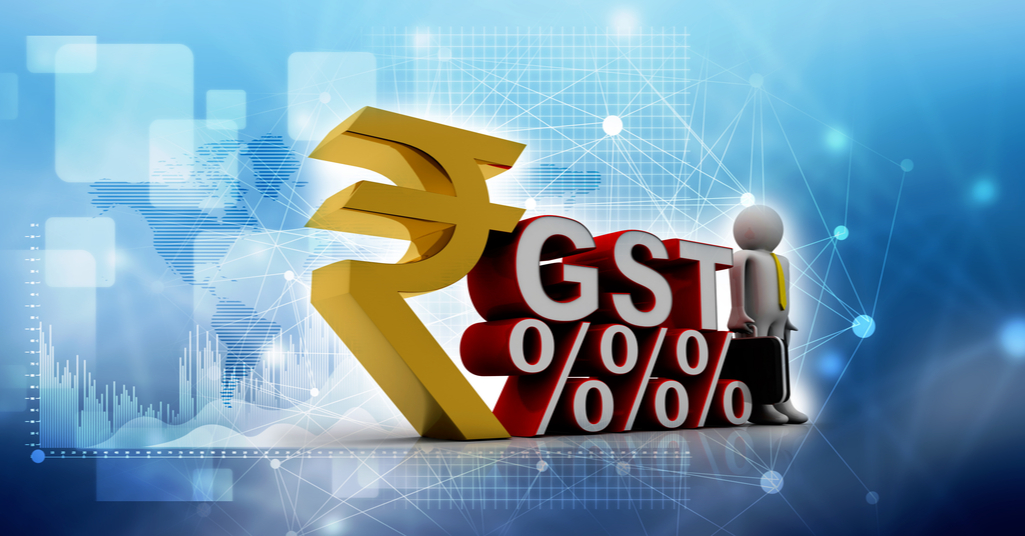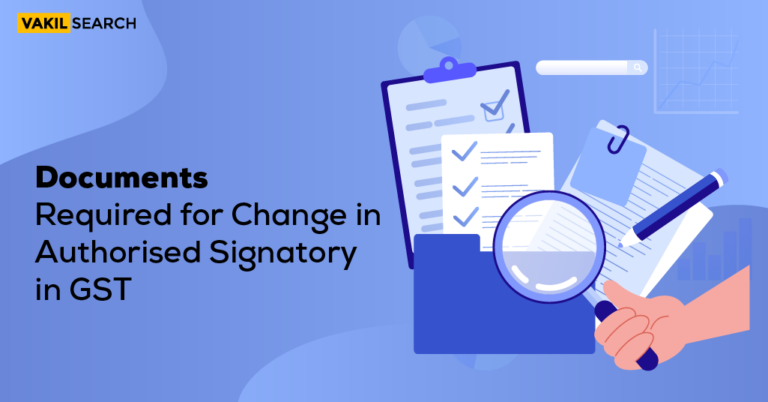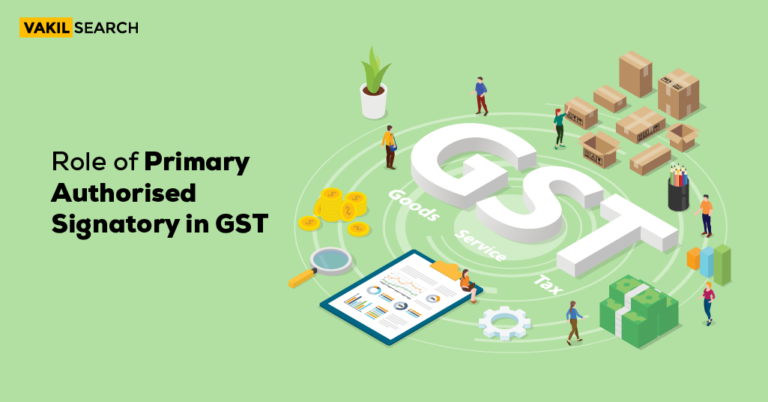Know the details of the minimum limit for GST registration, understand the turnover thresholds that determine mandatory registration and the voluntary option available to businesses. Stay informed about the essentials of GST compliance in India.
Overview
Goods and Services Tax (GST) is an indirect tax levied on the supply of goods and services in India. It is a unified tax that replaced multiple indirect taxes such as excise duty, VAT, and service tax. GST has been implemented in India since July 2017 and has brought about a significant change in the taxation system of the country. One of the key aspects of GST is the registration requirement for taxpayers. In this article, we will discuss the GST registration limit for goods and the various aspects related to it.
GST Registration Limit for Goods a business entity whose annual turnover exceeds Rs.40 lakh for a supplier of goods is required to register under the Goods and Services Tax. For some North Eastern and hilly states designated as special category states & the state of Telangana, the ceiling is fixed at Rs. 20 lakhs as per the GST Registration.
Whose Threshold Limit for Supply of Goods is ₹ 40 lakh
- Jammu and Kashmir
- Ladakh
- Assam
- Kerala
- Chhattisgarh
- Jharkhand
- Delhi
- Bihar
- Maharashtra
- Andhra Pradesh
- Gujarat
- Haryana
- Goa
- Punjab
- Uttar Pradesh
- Himachal Pradesh
- Karnataka
- Madhya Pradesh
- Odisha
- Rajasthan
- Tamil Nadu
- West Bengal
- Lakshadweep
- Dadra and Nagar Haveli
- Daman and Diu,
- Andaman and Nicobar Islands
- Chandigarh
States Whose Threshold Limit for Supply of Goods is ₹ 20 lakh
- Arunachal Pradesh
- Manipur
- Meghalaya
- Mizoram
- Nagaland
- Puducherry
- Sikkim
- Telangana
- Tripura
- Uttarakhand
Aggregate Turnover GST Registration Limit for Goods for Supply of Goods
Aggregate turnover refers to the total value of all taxable supplies (excluding inward supplies on which a person pays tax on a reverse charge basis), exempt supplies, exports of goods or services or both, and inter-state supplies of persons with the same Permanent Account Number (PAN), quantified on an all-India premise but excluding central tax, state tax, union territory tax, Integrated tax, and cess.
To help you comprehend the idea of aggregate turnover, consider the following example.
Mr. Raju is a farmer with a ₹ 55 lakh annual revenue. The turnover is GST-free since the income is tied to agriculture. Mr. Anil, on the other hand, includes plastic bags with his crop and charges extra for them. His sales of plastic bags generate revenue of ₹ 1 lakh, and we know that this transaction (selling \of plastic bags) is subject to GST. In plain English, his aggregate turnover is simply ₹ 1 lakh.
GST Registration Limit For Goods
Under the GST regime, the registration limit for goods suppliers is determined based on their turnover. The GST Act specifies that businesses with an annual turnover of up to Rs. 40 lakhs (Rs. 20 lakhs for special category states) are not required to register under GST. This limit is known as the GST exemption limit or the threshold limit.
If a business’s annual turnover exceeds the threshold limit, it becomes mandatory for the business to obtain GST registration. This means that the business has to collect GST from its customers and remit it to the government. It also means that the business can claim an input tax credit for the tax paid on its purchases.
However, businesses that supply goods through e-commerce platforms are subject to different rules. If a business sells goods through an e-commerce operator, it has to obtain GST registration regardless of its turnover. This is because the e-commerce operator is responsible for collecting and remitting GST on behalf of the seller.
Reverse Charge Mechanism for Supply of Goods
Reverse Charge: – ‘the liability to pay tax by the recipient of the supply of goods or services or both instead of the supplier of such goods or services or both under section 9(3) or 9(4) of CGST Act or under section 5(3) or 5(4) of IGST Act.’
GST Interest Calculator lets you calculate how much GST you will have to pay when you register for GST in India.
Generally, the supplier is responsible for collecting tax from the recipient of products or services and thereby remitting it to the appropriate tax authorities. However, the government has been granted the authority where the providers of some notified goods and services are not required to pay tax and the receiver himself is required to deposit the tax with the tax authorities.
| Description of Supply of Goods | Supplier of Goods | Recipient of Goods |
| Cashew nuts (not shelled or peeled) | Agriculturist | Any registered person |
| Bidi Wrapper Leaves (tendu), Tobacco Leaves | Agriculturist | Any registered person |
| Silk Yarn | Manufacturer of silk yarn from raw silk or silk worm cocoons | Any registered person |
| Lottery | State Government, Union Territory or local authority | Lottery distributor or selling agent |
| Raw Cotton | Agriculturist | Any registered person |
| Used vehicles, seized and confiscated goods, old and used goods, waste and scrap |
Central Government, State Government, Union Territory or local authority |
Any registered person |
| Purchase of priority sector lending certificate | Registered person | Any registered person |
Which activities are eligible for taxation under GST?
A ‘taxable person’ according to the GST Act refers to an individual or entity involved in business operations anywhere in India, obligated to register under the Act. This includes those engaged in economic activities like trade. The term ‘person’ encompasses various entities such as individuals, HUF, companies, LLPs, AOP/BOI, foreign corporations, co-operative societies, local authorities, government bodies, trusts, and artificial juridical persons.
Under GST, various economic activities are eligible for taxation. This includes the supply of goods and services, both of which are subject to GST. The term supply is broad and encompasses the sale, transfer, barter, exchange, license, rental, lease, or disposal made for a consideration. Additionally, activities such as importation of goods and services, intra-state and inter-state transactions, and certain specified transactions even if made without consideration, are liable to be taxed under the Goods and Services Tax (GST) regime. It’s important to refer to the GST laws and guidelines for specific details regarding taxable activities and applicable rates.
Which activities are exempted from GST registration?
- Agricultural services – cultivation, harvesting, packaging, warehousing, machinery leasing (excluding horse rearing).
- Public transportation – auto-rickshaws, metered cabs, metro.
- International transportation of agricultural goods.
- Labor supply for farming.
- Goods transportation under ₹ 1500 charges.
- Retail packing, pre-conditioning, and waxing services.
- Foreign diplomatic and government services.
- Healthcare, education, ambulance, and charity services.
- Services by RBI, IRDAI, Central/State Government, NPS, etc.
- Basic Saving Bank Deposit (BSBD) account services under PMJDY.
- Exemption for services in religious ceremonies, sports organizations, tour guides, and libraries.
Understanding the rationale behind these exemptions is crucial for clarity on GST registration exclusions.
What falls within the GST criterion of aggregate turnover?
The term aggregate turnover encompasses the combined value of all taxable supplies (excluding those subject to reverse charge), exempt supplies, and exports, including inter-state supplies made by entities sharing the same Permanent Account Number (PAN). This calculation is done nationwide but excludes central tax, State tax, Union territory tax, integrated tax, and cess. The aggregate turnover is a pivotal factor in determining a supplier’s eligibility for the exemption threshold of ₹ 20 Lakhs (₹ 10 Lakhs for special category States excluding J & K) and establishing the threshold limit for the composition levy.
Financial Year to Reckon the Aggregate Turnover
Determining the aggregate turnover for the current financial year, exemplified by FY 2019-2020, is crucial for the applicability of new threshold limits under the Goods and Services Tax (GST) regime. Suppliers surpassing these thresholds must register under GST. However, specific categories, such as interstate suppliers, casual taxable persons, and those under reverse charge, are obligated to register irrespective of turnover.
Compulsory registration also extends to non-resident and input service distributors, along with entities involved in TDS and TCS under GST. Agents or principals making sales on behalf of others fall under this mandate. Additionally, e-commerce operators facilitating supply and suppliers trading through them are obligated. Notably, online service providers from outside India offering services to unregistered individuals in India also necessitate GST registration. Understanding the financial year’s aggregate turnover is fundamental for compliance with these diverse GST registration requirements.
Changes in the Threshold Limits For Composition Scheme
Effective April 1, 2019, significant changes were implemented in the Composition Scheme’s threshold limits, aiming to simplify taxation for businesses. The annual turnover threshold for availing the composition scheme increased to ₹ 1.5 crore, streamlining the compliance process for eligible taxpayers. Quarterly tax payments and annual return filings became mandatory for those registered under the scheme, fostering a more structured approach to taxation.
In alignment with these changes, specific considerations were made for North Eastern states, Uttarakhand, and restaurants not serving alcoholic beverages, where the threshold limit remained at ₹ 75 lakh.
Furthermore, the Composition Scheme was extended to service providers, introducing a fixed tax rate of 6%, comprising 3% CGST and 3% SGST. This expansion accommodates independent service providers and mixed suppliers of goods and services with an annual turnover of up to ₹ 50 lakh in the preceding financial year, offering them a simplified and beneficial tax framework.
Conclusion
In conclusion, the GST registration limit for goods is determined based on the annual turnover of the business. Businesses with an annual turnover of up to Rs. 40 lakhs (Rs. 20 lakhs for special category states) are not required to register under GST. However, businesses that supply goods through e-commerce platforms have to obtain GST registration regardless of their turnover. GST registration offers several benefits to businesses, such as legitimacy, input tax credit, access to wider markets, and compliance with the law. Therefore, businesses should obtain GST registration as per the applicable rules and regulations.
FAQs:
What is GST?
GST, or Goods and Services Tax, is a comprehensive indirect tax reform that subsumes various state and central taxes, aiming to simplify and streamline the taxation system in India.
How is GST different from the previous tax system?
GST replaces the earlier complex tax structure with a unified tax system, eliminating cascading effects and promoting a more transparent and efficient tax regime.
Is GST applicable on all goods and services?
Yes, GST applies to a wide range of goods and services, covering most economic activities, both in the manufacturing and services sectors.
What is the GST registration limit for service providers?
Service providers are required to register under GST if their aggregate turnover exceeds the threshold limit, which is ₹ 20 lakhs (₹ 10 lakhs for special category states) annually.
Is GST mandatory for small businesses with turnover below 20 lakhs?
Small businesses with an annual turnover below ₹ 20 lakhs (₹ 10 lakhs for special category states) are exempt from GST registration, but voluntary registration is an option.
What is the difference between CGST, SGST, and IGST?
CGST (Central GST) and SGST (State GST) are levied on intra-state transactions, while IGST (Integrated GST) applies to inter-state transactions, ensuring a seamless tax mechanism.
What is the minimum limit for GST?
Businesses dealing in goods must register for GST if their annual turnover is ₹ 40 lakhs, while those providing services need to register if their turnover is ₹ 20 lakhs. Entities with turnovers below these thresholds are not compelled to register but have the option to voluntarily do so.
Is no GST till 40 lakhs?
No, the exemption limit for GST registration is ₹ 20 lakhs (₹ 10 lakhs for special category states). Businesses with turnover below this limit are not required to register under GST.
What is the maximum threshold limit?
The maximum threshold limit refers to the highest point allowed before certain criteria, such as tax liability or eligibility, are triggered. In the context of GST, it often pertains to the turnover threshold, beyond which businesses are required to register for GST.
How is GST TDS calculated in India?
GST TDS (Tax Deducted at Source) is calculated as a percentage of the total invoice value. The current rate is 2% for both CGST and SGST/UTGST or 4% for IGST. This amount is withheld at the time of payment to the supplier.
What is Applicable GST rate for goods?
The applicable GST rate for goods varies based on the nature of the product. Goods are categorised under different GST rates, such as 5%, 12%, 18%, and 28%. Essential items often fall under lower slabs, while luxury and demerit goods attract higher rates.
What are the 4 slabs of GST in India?
GST in India is structured into four slabs: 5%, 12%, 18%, and 28%. These slabs determine the applicable tax rate for goods and services. The classification ensures a balanced and uniform tax regime, accommodating a range of products and services under distinct tax brackets for effective implementation.










